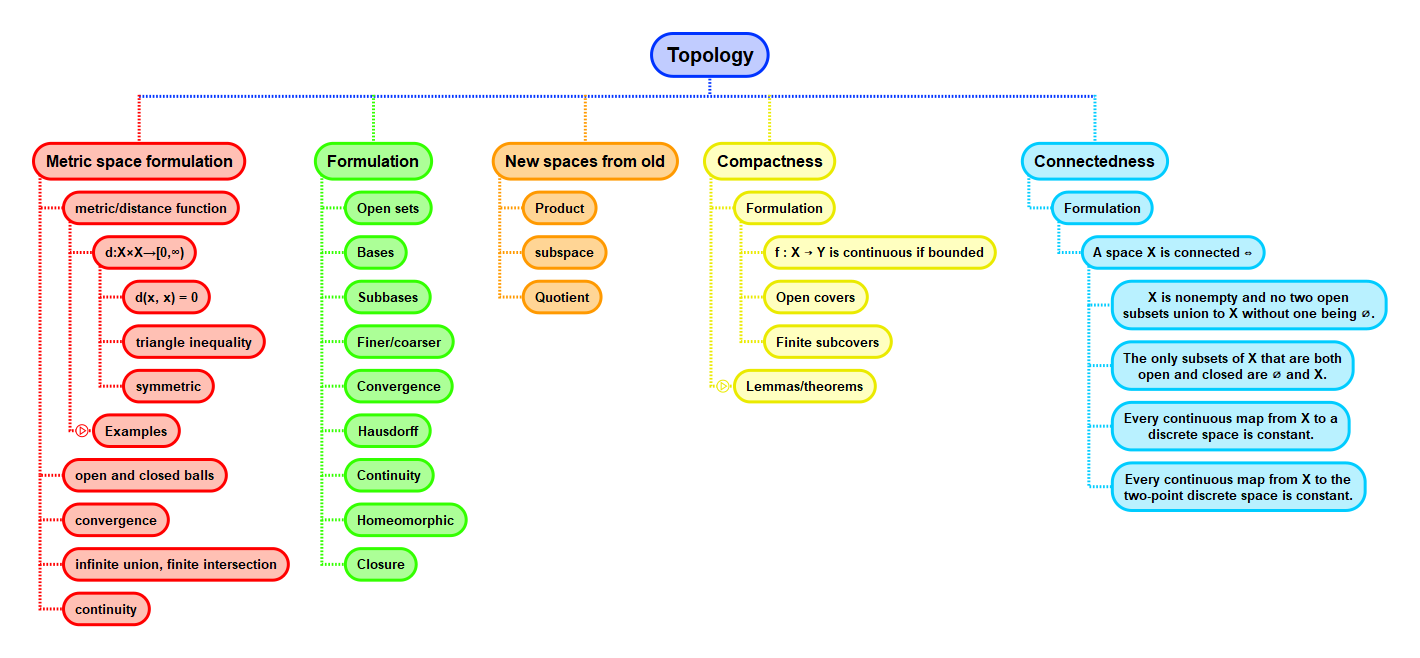Neighbourhoods
Let \( X \) be a set with topology \( \mathcal{T} \). A neighbourhood of \( x \) is an open subset of \( X \) containing \( x \).
This is the definition according to Munkres. Tom Leinster gives a different definition that distinguishes between a 'neighbourhood' and an 'open neighbourhood'.
Neighbourhood is the closest we get to the metric space idea of open balls around a point.
The term neighbourhood packs a noun-verb pair into a noun, which I think is part of why using it makes it easier to conceptualize compared to 'open set containing \( x \)'.
The next lemma is of interest because it is a lemma expressed in the terms of topology that is in some sense an isomorphism of a definition that appeared when formulating open sets in metric spaces. When defining open sets of a topology, for our definition we took the metric space's derived result of open sets being closed under arbitrary union and finite intersection. Now we have come to a derived result of topological spaces that matches the founding definition of open sets in metric spaces. Isn't that an interesting loop.
Lemma. Open iff all elements have a neighbourhood subset
Let \( X \) be a topological space and \( U \subseteq X \). Then \( U \) is open in \( X \) iff for all \( x \in U \), there is a neighbourhood of \( x \) contained in \( U \).
For comparison, the definition of open sets for a metric space is copied below:
Metric space: Open subsets, definition
Let \( X \) be a metric space and \( U \subseteq X \). Then \( U \) is open in \( X \) iff for all \( u \in U \), there is a \( \varepsilon > 0 \) such that \( B(u, \varepsilon) \subseteq U \).
Context

